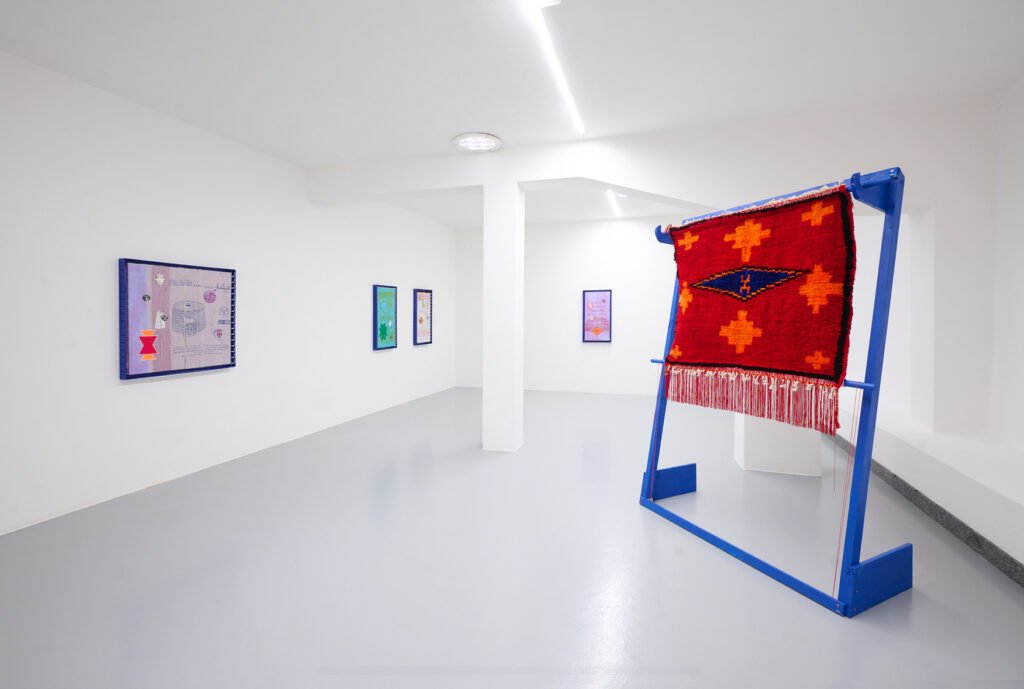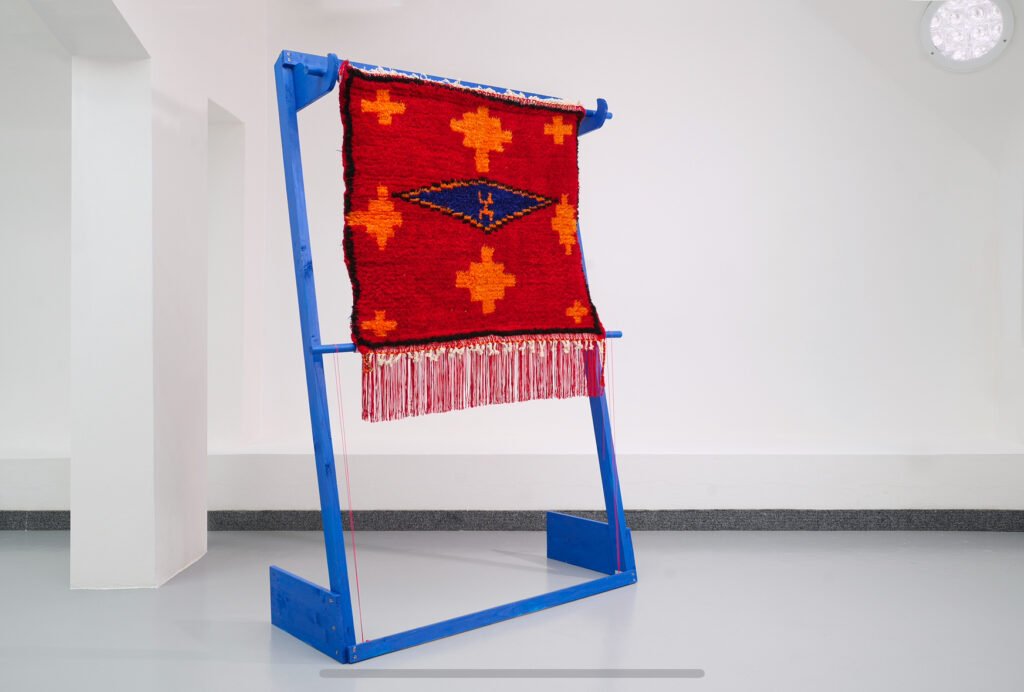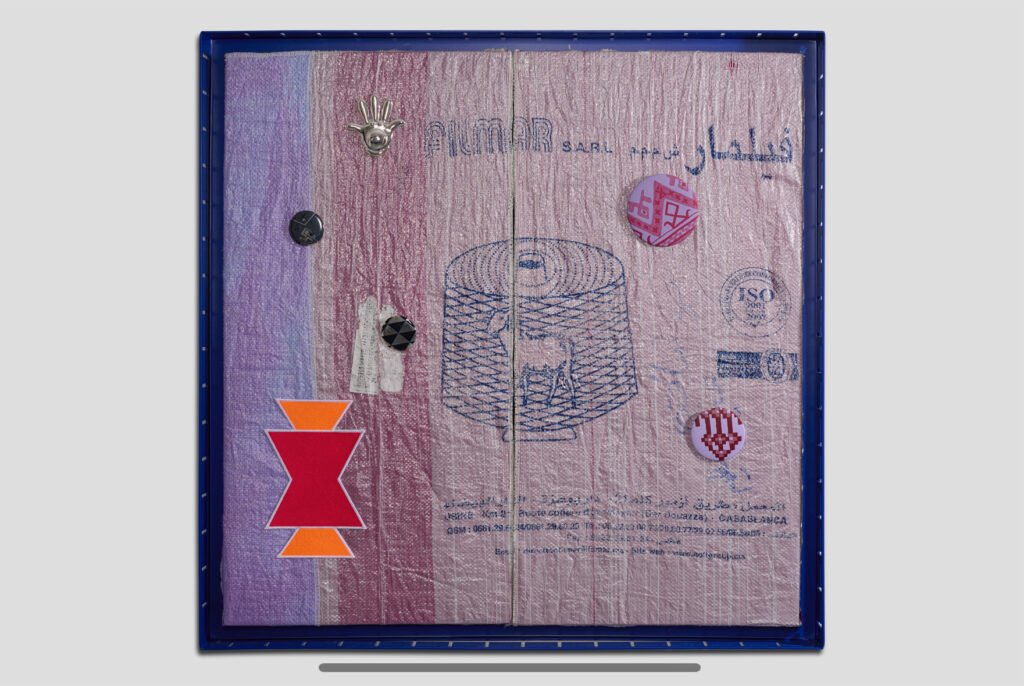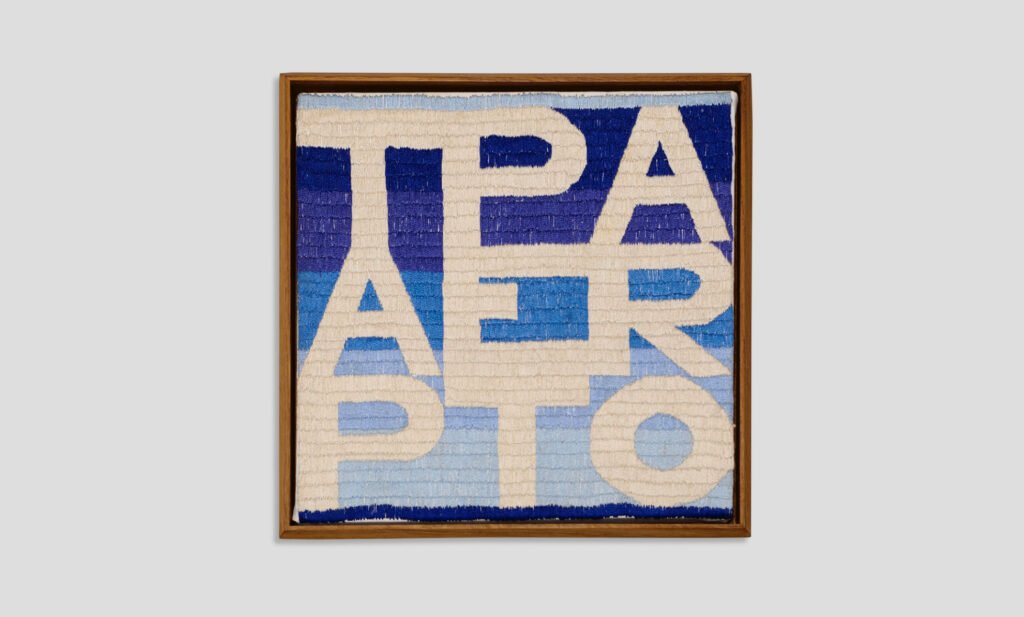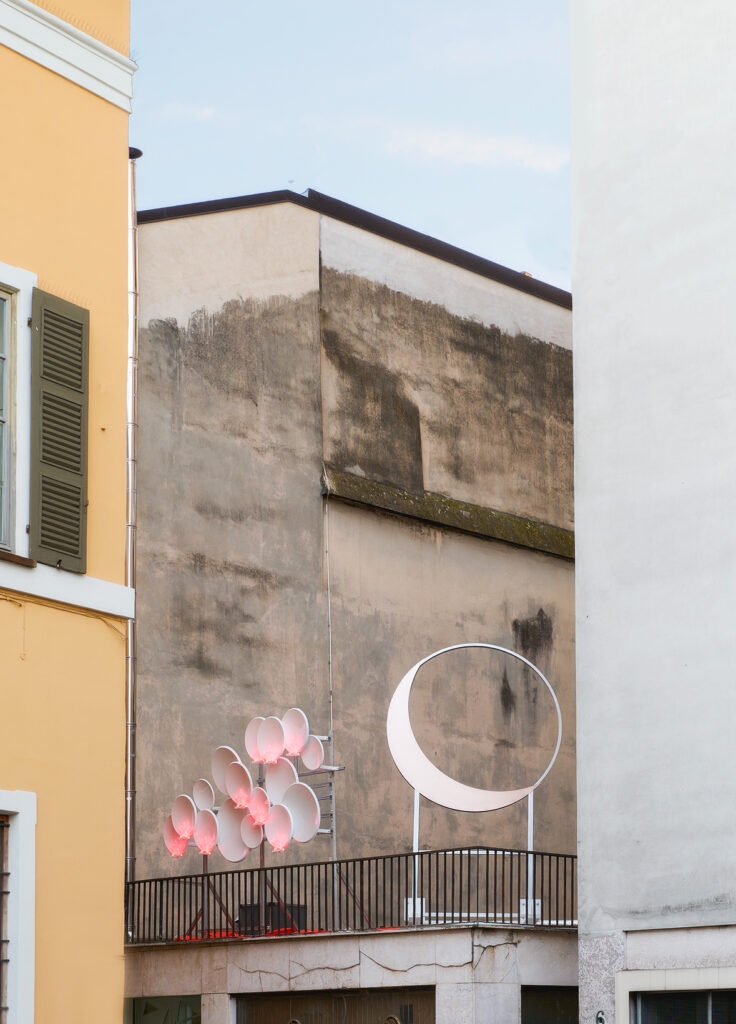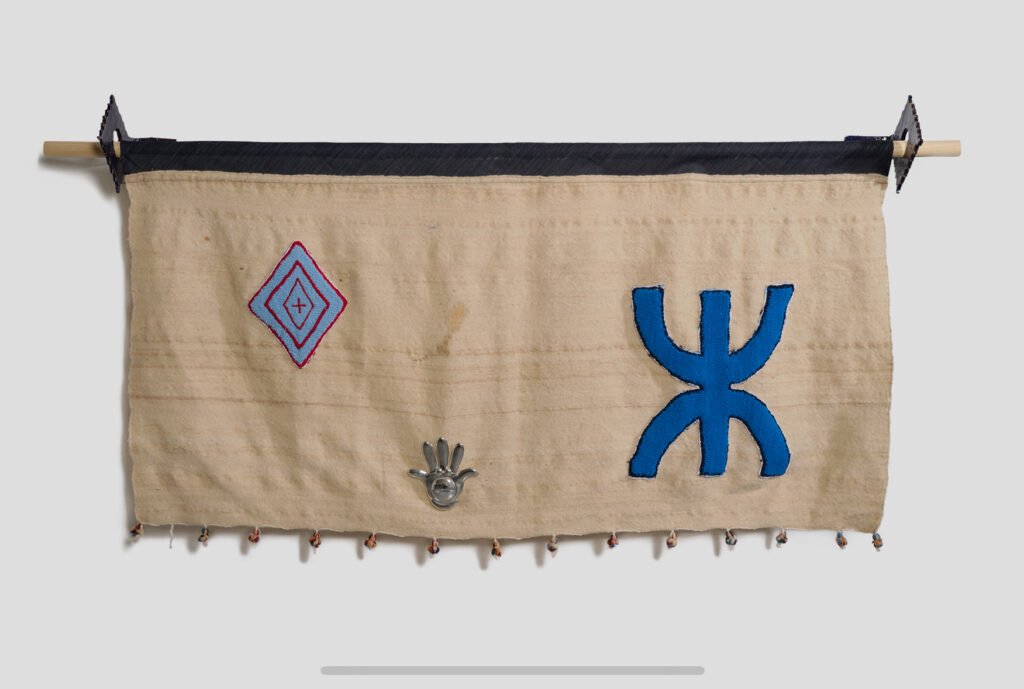Tappetaro
One of the central themes of Favini’s practice is travel. In Tappetaro, which title might sound curious, the artist reflects on a residency program that he attended in Morocco in 2017.
Through memory, photographic images and videos, Favini remembered the atmosphere lived in the African country eight years before, in order to produce a new body of work.
The artist spent a month on the Moroccan Atlas, where he met carpet craftswomen, dealers and historians. During this period, Favini learnt the Moroccan weaving, the Berber one in particular, as a biographical writing on female life. Women and their intimacy became the cornerstone of a narrative, but it also was a story of forgotten collective memory.
During the 70s, collectors showed interest in ethnic objects and carpets.
A great body of ancient Berber carpets was acquired by a group of Swiss and American collectors. As previously happened in other countries, this process led to the loss of the know-how, symbols and colors of a tradition that had been preserved not only by the loom, but also through the visualization of the objects themselves.
The idea behind this journey/residency was to bring a symbol of Sardinian textile (Arrivederci, 2016) and hybridize it with Moroccan culture. But something unplanned happened: the chosen symbol, a stylized woman, was claimed to be traditional to the Berber culture.
Starting from this symbol, in the village of Glitz was crafted a small carpet in the center of which the hybridized symbol was visible.
Also on the Atlas, Favini found some woven plastic sacks originally used for storing and transporting flour, sugar or wool. These sacks were abandoned all over the region, contributing to a serious pollution problem. Banned from the government, these sacks were woven as fabrics and were showcasing commercial images.
The artist’s interest was then shifted to the transmission of images at a distance. Many people had left the area for a better destiny in Europe, and their imaginary was highly hybridized with Western culture. Cultural transmissions happened through satellite TV and/or phone network, still maintaining a strong cultural nucleus.
Last but not least is the theme of scenery, a recurring element in the artist’s practice. Without a scenery, in fact, no travel can exist.



